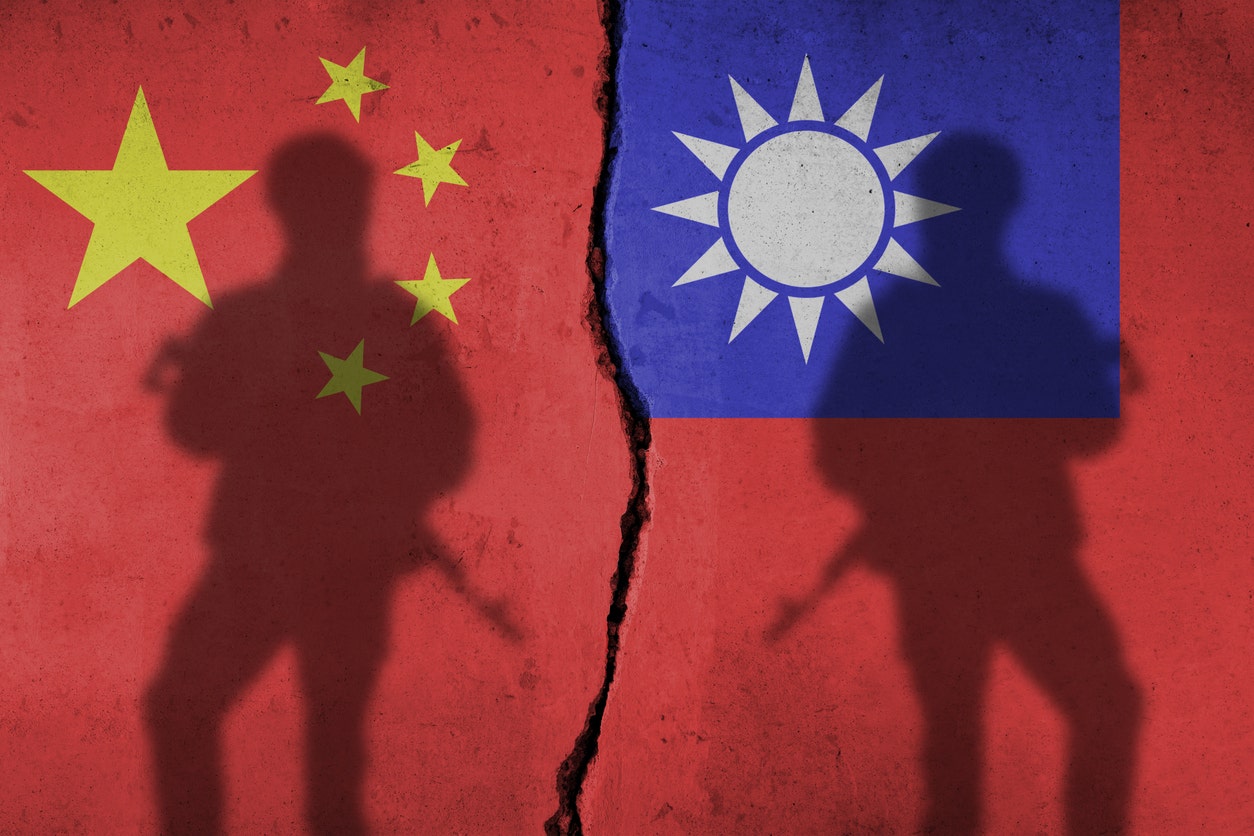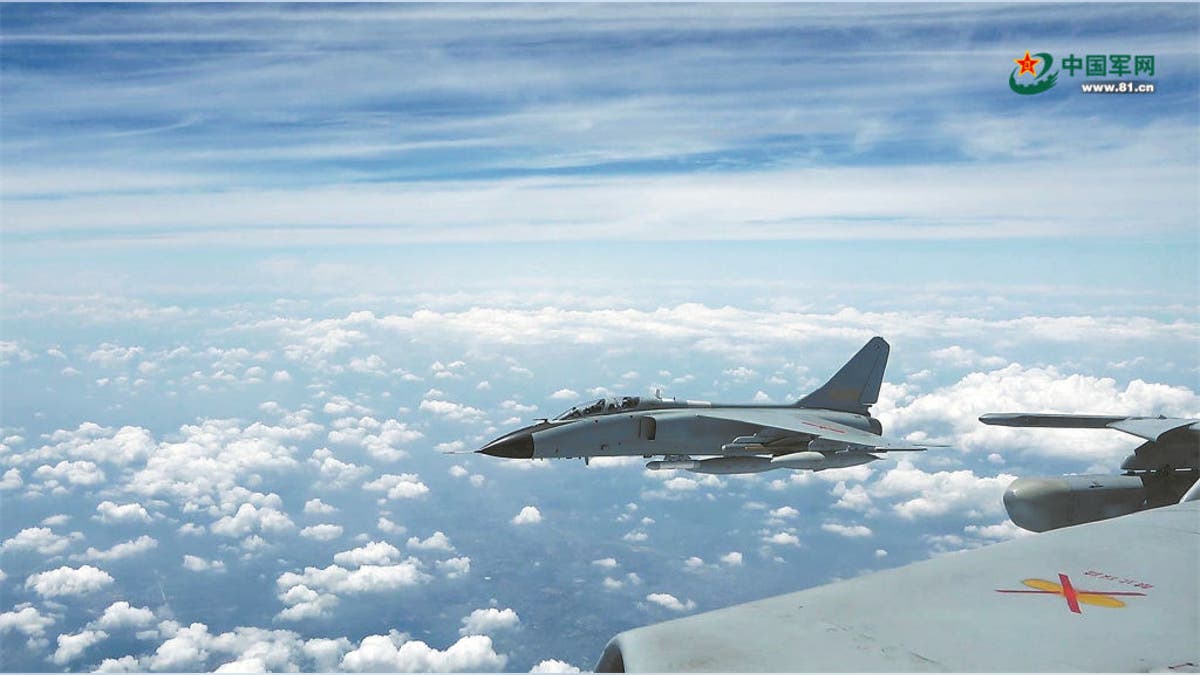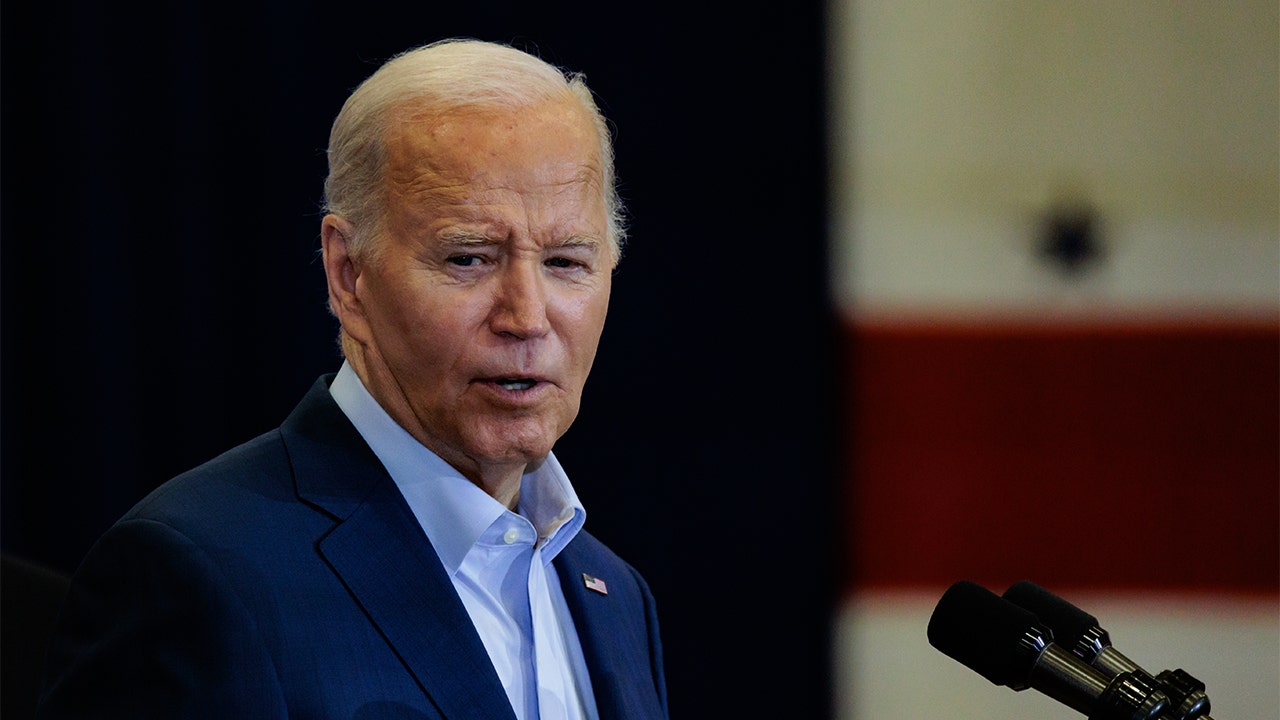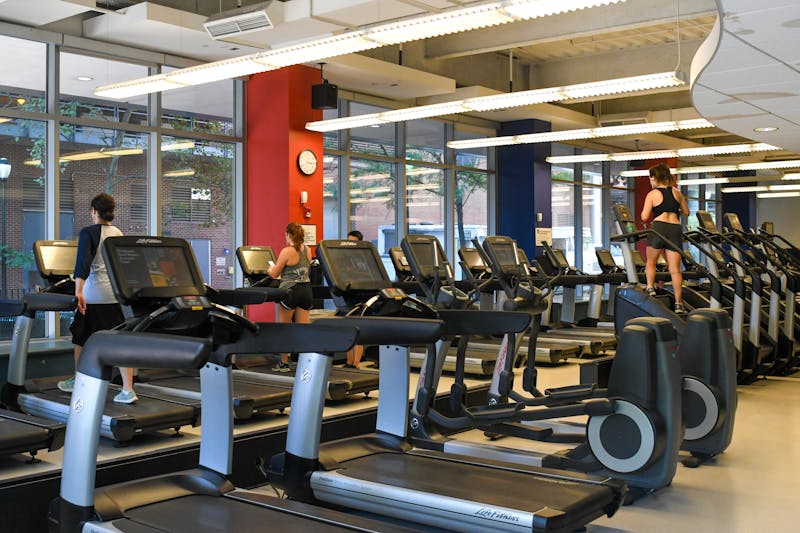World
China seeks to ‘wear down Taiwan’s reliance’ with covert economic and cyber operations, US wargamers say

KAOHSIUNG, TAIWAN – Over the next few years, the People’s Republic of China (PRC) will continue to target democratic, self-ruled Taiwan with “gray zone” tactics and an “anaconda” strategy—slow-strangulation efforts that seek to force Taipei to bow to Beijing without drastic measures such as an invasion.
Experts say China will escalate its efforts to disrupt the island’s economy by targeting critical industries and infrastructure and scale-up covert cyberwar operations that provide Beijing with just enough cover to maintain plausible deniability.
A recent U.S. wargame team from the Foundation for Defense of Democracies (FDD), a nonpartisan research institute, visited Taiwan in early August to hold the first-ever tabletop exercise focusing on economic and cybercoercion from China against Taiwan. The FDD team pointed out that the cost of launching a cyberattack, for example, is significantly lower than the cost of defending against it. This asymmetry allows China to exert considerable pressure on Taiwan without triggering a direct U.S. military response.
TAIWAN REACTS TO TRUMP’S THEY ‘SHOULD PAY US FOR DEFENSE’ COMMENTS
Black Hawk helicopters prepare to land at Taoyuan International Airport as part of the annual Han Kuang military exercise in Taoyuan, Taiwan, in July 2023. (Reuters/Ann Wang)
Local experts agree that Taiwan has its work cut out for it in defending against cyberwarfare and disinformation campaigns, especially at a time when artifical intelligence is making “truth” much harder to define.
A trailer for a soon-to-be-released Taiwanese television series that dramatizes a People’s Liberation Army attack on Taiwan has surprised some here with its portrayals of deep fake videos, as well as massive cyberattacks that take over electronic billboards across the island and display false info.

The Guard of Honor of the Chinese People’s Liberation Army performs a flag-raising ceremony at Bayi Square to celebrate the 97th anniversary on China’s Army Day on Aug. 1, 2024 in Nanchang, Jiangxi Province of China. (Ma Yue/VCG via Getty Images)
RADM (Ret.) Mark Montgomery, the FDD’s senior director of the Center on Cyber and Technology Innovation, took part in the Taiwan wargames. In an online talk to the media shortly after returning to the United States, he noted Taiwan faces challenges with economic continuity. “How do you keep things going during a series of interlaced critical infrastructure failures? Where electrical power drives a problem with financial services, things like that.”
Dean Karalekas, author of “Civil-Military Relations in Taiwan: Identity and Transformation,” told Fox News Digital that “The Russian invasion of Ukraine has been something of a double-edged sword in terms of Taiwanese preparedness.” Karalekas pointed out that, on the one hand, it has opened many people’s eyes to the realistic likelihood that Chinese President Xi Jinping will follow Russian President Vladimir Putin’s lead and make good on his promises to annex the island, and the Taiwanese have taken it upon themselves to train in preparation. Karalekas was not involved in the tabletop exercise.

Taiwanese soldiers are deployed during a war and disaster drill as part of the annual Wan-An Air Raid Drill, at a seaport in New Taipei, Taiwan, on July 23, 2024. The drill, which coincides with the annual Han Kuang Exercise, is a joint exercise by nearly 2,000 individuals from government agencies including the military, fire fighting and rescue services. (Daniel Ceng/Anadolu via Getty Images)
On the other hand, Karalekas and other experts agree that many of the skills some in Taiwan are developing are designed to survive kinetic combat of the sort seen in Ukraine – combat, Karalekas and others think, is very unlikely. “It is far more likely that China will begin with a blockade, and soften up the Taiwanese citizenry by depriving them of food, electricity, and all the other imports upon which their economy, and their lives, depend,” Karalekas opined. “No one can read Xi’s mind, but this seems more likely—and more likely to succeed—than an all-out invasion of the sort Putin launched.”
FOR CHINA’S MILITARY PLANNERS, TAIWAN IS NOT AN EASY ISLAND TO INVADE

Tawianese soldiers on board an amphibious ferrying vehicle release oil drums onto Tamsui River during river defense exercise as part of the annual Han Kuang military drill in New Taipei, Taiwan, on July 22, 2024. (Daniel Ceng/Anadolu via Getty Images)
The U.S.-Taiwan Partnership: A Crucial Factor
In both Taipei and Washington, there is a consensus that both U.S. political parties are committed to supporting Taiwan’s defense, which poses the largest deterrent to China. However, suggestions for improvements include a more entrepreneurial approach to military hardware and software procurement.
Taiwan’s defense budget is constrained by the fact that it can – realistically – only purchase equipment from the U.S. However, the experts said, if smaller, innovative companies were added to the list of those supplying Taiwan’s military, the island could receive necessary tools for asymmetric defense faster and perhaps also cheaper.

Taiwan and US subject matter experts take briefing on Chinese economic coercion moves in initial stage of multi-move tabletop exercise in Taipei. ( TABF (Taiwan Academy of Banking and Finance).)
A roughly 100-mile stretch of water separates China from Taiwan, and as Matt Pottinger suggested in a recent book, titled “The Boiling Moat,” Taiwan and its major ally, the United States, should look for more innovative ways to turn the Taiwan Strait into a death trap for any PRC invasion attempt.
Put simply, it is easy to neutralize a few submarines, but much harder to kill thousands of small, “kamikaze” drone subs that could swarm Chinese ships and vessels, sending them to the bottom of the shallow Taiwan Strait long before they reach the shores of Taiwan.
Taiwan’s Internal Challenges: Reserves and Energy

The Chinese People’s Liberation Army’s Eastern Theater Command launches large-scale joint military exercises around Taiwan with naval vessels and military aircraft in China on May 24, 2024. (Photo by Feng Hao / PLA / China Military/Anadolu via Getty Images)
U.S. and Taiwanese experts agree that reforming Taiwan’s military reserves is essential. At present, they are insufficiently trained and sorely ill-equipped. Building a robust reserve force is no easy feat, however, and will require a multi-year plan backed by significant financial resources and political will.
INSPIRED BY UKRAINE, TAIWAN SEEKS TO BOLSTER MILITARY PREPAREDNESS AS CHINA THREAT CONTINUES
Taiwan’s reliance on imported liquefied natural gas (LNG) was also singled out by the FDD team as a potential weakness. Around 40% of Taiwan’s power generation is fueled by LNG, and the country has only a reported 10-plus-day inventory. The fact that Taiwan’s LNG must be transported by sea, means that no matter if it comes from Australia, a U.S. ally, or Qatar, generally seen as more pro-China, LNG shipments are vulnerable to a maritime blockade or “quarantine.”
Complicating matters, the Democratic Progressive Party, which has ruled Taiwan since 2016, refused to extend the life of Taiwan’s existing nuclear energy reactors (the last of which will go offline in 2025) and has instead pledged resources toward wind and solar. However, green power sources may not provide meaningful or resilient power, as FDD China Program Director Craig Singelton pointed out in the same previously-mentioned media briefing, “I think it’s quite clear in every war game I’ve ever participated in … that Chinese pilots use the wind turbines for target practice.”
The November 2024 Election’s Impact: A Looming Question
The FDD team noted that some Taiwanese officials are concerned about the potential impact of the upcoming U.S. presidential election and worry about the possibility of a more transactional approach from a second Trump administration. Former President Donald Trump made headlines not long ago for saying that Taiwan should “pay us” for defense and that Taiwan “doesn’t give us anything.”
Trump is known to use hyperbolic statements to help convey his insistence that allies – from Taiwan to NATO – contribute more financially to defense. Members of the U.S. wargame team suggested that Taiwan should proactively address the concerns raised by the former president about its defense budget, essentially “showing the receipts” in a public manner to showcase its previous spending while continuing to commit to increased spending, all while gently reminding the U.S. public and Washington of the benefits of a strong U.S.-Taiwan partnership.

World
Sensors can read your sweat and predict overheating. Here's why privacy advocates care
On a hot summer day in Oak Ridge, Tennessee, dozens of men removed pipes, asbestos and hazardous waste while working to decontaminate a nuclear facility and prepare it for demolition.
Dressed in head-to-toe coveralls and fitted with respirators, the crew members toiling in a building without power had no obvious respite from the heat. Instead, they wore armbands that recorded their heart rates, movements and exertion levels for signs of heat stress.
Stephanie Miller, a safety and health manager for a U.S. government contractor doing cleanup work at the Oak Ridge National Laboratory, watched a computer screen nearby. A color-coding system with little bubbles showing each worker’s physiological data alerted her if anyone was in danger of overheating.
“Heat is one of the greatest risks that we have in this work, even though we deal with high radiation, hazardous chemicals and heavy metals,” Miller said.
As the world experiences more record high temperatures, employers are exploring wearable technologies to keep workers safe. New devices collect biometric data to estimate core body temperature – an elevated one is a symptom of heat exhaustion – and prompt workers to take cool-down breaks.
The devices, which were originally developed for athletes, firefighters and military personnel, are getting adopted at a time when the Atlantic Council estimates heat-induced losses in labor productivity could cost the U.S. approximately $100 billion annually.
This article is part of AP’s Be Well coverage, focusing on wellness, fitness, diet and mental health. Read more Be Well.
But there are concerns about how the medical information collected on employees will be safeguarded. Some labor groups worry managers could use it to penalize people for taking needed breaks.
“Any time you put any device on a worker, they’re very concerned about tracking, privacy, and how are you going to use this against me,” said Travis Parsons, director of occupational safety and health at the Laborers’ Health and Safety Fund of North America. “There’s a lot of exciting stuff out there, but there’s no guardrails around it.”
VULNERABLE TO HEAT
At the Tennessee cleanup site, the workers wearing heat stress monitors made by Atlanta company SlateSafety are employed by United Cleanup Oak Ridge. The company is a contractor of the U.S. Department of Energy, which has rules to prevent on-the-job overheating.
But most U.S. workers lack protections from extreme heat because there are no federal regulations requiring them, and many vulnerable workers don’t speak up or seek medical attention. In July, the Biden administration proposed a rule to protect 36 million workers from heat-related illnesses.
From 1992 to 2022, 986 workers died from heat exposure in the U.S., according to the Environmental Protection Agency. Experts suspect the number is higher because a coroner might not list heat as the cause of death if a sweltering roofer takes a fatal fall.
Setting occupational safety standards can be tricky because individuals respond differently to heat. That’s where the makers of wearable devices hope to come in.
HOW WEARABLE HEAT TECH WORKS
Employers have observed workers for heat-related distress by checking their temperatures with thermometers, sometimes rectally. More recently, firefighters and military personnel swallowed thermometer capsules.
“That just was not going to work in our work environment,” Rob Somers, global environment, health and safety director at consumer product company Perrigo, said.
Instead, more than 100 employees at the company’s infant formula plants were outfitted with SlateSafety armbands. The devices estimate a wearer’s core body temperature, and a reading of 101.3 degrees triggers an alert.
Another SlateSafety customer is a Cardinal Glass factory in Wisconsin, where four masons maintain a furnace that reaches 3000 degrees Fahrenheit.
“They’re right up against the face of the wall. So it’s them and fire,” Jeff Bechel, the company’s safety manager, said.
Cardinal Glass paid $5,000 for five armbands, software and air-monitoring hardware. Bechel thinks the investment will pay off; an employee’s two heat-related emergency room visits cost the company $15,000.
Another wearable, made by Massachusetts company Epicore Biosystems, analyzes sweat to determine when workers are at risk of dehydration and overheating.
“Until a few years ago, you just sort of wiped (sweat) off with a towel,” CEO Rooz Ghaffari said. “Turns out there’s all this information packed away that we’ve been missing.”
Research has shown some devices successfully predict core body temperature in controlled environments, but their accuracy remains unproven in dynamic workplaces, according to experts. A 2022 research review said factors such as age, gender and ambient humidity make it challenging to reliably gauge body temperature with the technology.
The United Cleanup Oak Ridge workers swathed in protective gear can get sweaty even before they begin demolition. Managers see dozens of sensor alerts daily.
Laborer Xavier Allison, 33, was removing heavy pieces of ductwork during a recent heat wave when his device vibrated. Since he was working with radioactive materials and asbestos, he couldn’t walk outside to rest without going through a decontamination process, so he spent about 15 minutes in a nearby room which was just as hot.
“You just sit by yourself and do your best to cool off,” Allison said.
The armband notifies workers when they’ve cooled down enough to resume work.
“Ever since we implemented it, we have seen a significant decrease in the number of people who need to get medical attention,” Miller said.
COLLECTING PERSONAL DATA
United Cleanup Oak Ridge uses the sensor data and an annual medical exam to determine work assignments, Miller said. After noticing patterns, the company sent a few employees to see their personal physicians, who found heart issues the employees hadn’t known about, she said.
At Perrigo, managers analyze the data to find people with multiple alerts and speak to them to see if there’s “a reason why they’re not able to work in the environment,” Somers said. The information is organized by identification numbers, not names, when it goes into the company’s software system, he said.
Companies keeping years of medical data raises concerns about privacy and whether bosses may use the information to kick an employee off a health plan or fire them, said Adam Schwartz, privacy litigation director at the Electronic Frontier Foundation.
“The device could hurt, frankly, because you could raise your hand and say ‘I need a break,’ and the boss could say, ‘No, your heart rate is not elevated, go back to work,’” Schwartz said.
To minimize such risks, employers should allow workers to opt in or out of wearing monitoring devices, only process strictly necessary data and delete the information within 24 hours, he said.
Wearing such devices also may expose workers to unwanted marketing, Ikusei Misaka, a professor at Tokyo’s Musashino University, said.
A PARTIAL SOLUTION
The National Institute for Occupational Safety and Health advises employers to institute a plan to help workers adjust to hot conditions and to train them to recognize signs of heat-related illness and to administer first aid. Wearable devices can be part of efforts to reduce heat stress, but more work needs to be done to determine their accuracy, said Doug Trout, the agency’s medical officer.
The technology also needs to be paired with access to breaks, shade and cool water, since many workers, especially in agriculture, fear retaliation for pausing to cool off or hydrate.
“If they don’t have water to drink, and the time to do it, it doesn’t mean much,” Juanita Constible, senior advocate at the National Resources Defense Council, said. “It’s just something extra they have to carry when they’re in the hot fields.”
___
Yuri Kageyama in Tokyo contributed to this report.
World
French police officer injured in synagogue arson attack

A police officer who was at the synagogue was injured when a gas cylinder allegedly exploded in a parked car, local media reported.
Two cars parked at the Beth Yaacov synagogue in the seaside resort town of La Grande Motte near Montpellier were set ablaze on Saturday morning, injuring a police officer, according to French media reports.
He was injured when a gas cylinder allegedly exploded in one of the cars, local media reported.
The Ministry of Justice said there had been five people, including the rabbi, inside the synagogue at the time of the attack, but none of them were hurt.
France’s acting interior minister quickly ordered police reinforcements to protect Jewish places of worship across the country.
In a post on Saturday morning interior minister Gérald Damarnin said:
“An attempted arson attack, clearly criminal, hit the synagogue of La Grande Motte this morning. I want to assure our Jewish fellow citizens and the municipality of my full support.”
There’s been a surge of antisemitism in France – and many other countries – since the start of the Israel-Hamas war last year.
Darmanin is expected to travel to Le Grand Motte later on Saturday along with France’s acting Prime Minister Gabriel Attal.
World
Canada rail workers union to challenge government decision to refer dispute to labor board

-

 Minnesota6 days ago
Minnesota6 days agoReaders and writers: Plenty of thrills and danger in these Minnesota author’s mysteries
-

 Politics1 week ago
Politics1 week agoHarris dodging flip-flop attacks as faceless surrogates flip on key positions: 'Playing politics'
-

 News1 week ago
News1 week agoVideo: Biden and Harris Announce Deal to Lower Drug Prices
-

 Politics1 week ago
Politics1 week agoBiden jokes about impending exit from the White House: 'Looking for a job'
-

 News1 week ago
News1 week agoHalf Their Land Burned in a Decade: The California Counties Constantly on Fire
-

 Fitness1 week ago
Fitness1 week agoA Guide to Pottruck Health and Fitness Center
-

 Politics1 week ago
Politics1 week agoTrump assassination attempt: Secret Service makes big change to former president's outdoor rally security
-

 News1 week ago
News1 week agoAI is changing video games — and striking performers want their due














